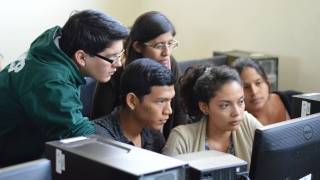Hopkins Medicine Researchers Say Offering MenB Vaccines to College Students is Not Cost Effective

Johns Hopkins Medicine researchers said today in a press release that providing universal vaccination against the meningitis B infection to college students may be too costly to justify.
But, this new Hopkins study also suggests that if vaccine developers could significantly lower the price, universal meningitis B (MenB) vaccination might be worth requiring on college campuses.
Currently, 38 states require college students to be vaccinated with the meningococcal conjugate vaccine, which delivers protection for meningitis serogroups A, C, W, and Y.
But not the MenB vaccination.
Currently, Bexsero and Trumenba are serogroup B meningococcal vaccines approved by the Food and Drug Administration.
MenB affects only 30 per 100,000 U.S. college students, according to 2017 data gathered by the U.S. Centers for Disease Control and Prevention (CDC).
During 2017, the National Notifiable Diseases Surveillance System, a unit of the CDC, identified 133 probable or confirmed cases of meningococcal serogroup B disease across the country.
During 2018, colleges such as Oregon State University, Penn State and San Diego State University have reported MenB outbreaks.
And, recently, the New Jersey state legislature began debating requiring the MenB vaccination for college students.
In a report on the cost/benefit estimate published in the December 17, 2018, issue of the American Journal of Preventive Medicine, these researchers determined the cost per quality-adjusted life year (QALY) to be $13.9 million if every entering college student in the United States were vaccinated.
The study suggests that universal vaccination of the college student population would be considered cost-effective only if a vaccine series cost less than $65 per person.
Currently, the average price of the meningitis B vaccination is $324, according to the study authors.
Overall, the Hopkins computer model predicted that a nonformal vaccination program was more cost-effective than universal vaccination from both the health sector and societal perspectives.
Vaccinating each entering class of college students would cost an estimated $323,810 per campus per year.
By contrast, an outbreak for a campus that would universally vaccinate after a case of infection was identified would cost $2.59 million per campus.
Given the low incidence of MenB infections, a universal vaccination program would reduce the number of cases in 4 years from an estimated 9.2 cases per 1,000 campuses to 4.6 per 1,000 campuses.
Therefore, Dr. Leeds and his team calculated, the incremental cost per QALY gained with universal vaccination was $13.9 million under the health sector perspective.
And, $13.8 million under the societal perspective, compared to an assumed social willingness to pay $150,000 per QALY.
"Despite the poor prognosis of meningitis B infection and the fairly reasonable cost of meningitis B (MenB) vaccination, the extreme rarity of this infection even amongst its peak in college-age individuals makes universal vaccination cost-ineffective," says lead study author Ira Leeds, M.D., M.B.A., a postdoctoral research fellow in the Department of Surgery at the Johns Hopkins University School of Medicine.
"Vaccinating 100,000 college students, for example, would prevent less than 5 cases of MenB."
"Vaccines have become widely available within the past few years," Dr. Leeds says, "but there's very little evidence to suggest that they're going to do much good given their high cost in a generally healthy population."
Meningitis is an inflammation (swelling) of the protective membranes covering the brain and spinal cord. A bacterial or viral infection of the fluid surrounding the brain and spinal cord usually causes the swelling, says the CDC.
The study set out to assess cost-effectiveness and determine potentially favorable conditions for support of universal vaccination relative to the current standard of care, in which vaccination is an individual patient or parental decision.
The investigators say their model considered the issue of universal vaccination from both a health sector perspective that incorporated individual and payer costs and a societal perspective that further accounted for lifetime productivity losses among students experiencing MenB infection.
To come up with their results, the investigators developed a computerized "decision tree" algorithm to trace and track the incremental cost-effectiveness and cost per case averted by universal vaccination of incoming students at a midsize U.S. four-year college.
They compared those costs against an informal, "random" vaccination program designed to mimic what this population might do if left to decide on its own whether to vaccinate.
Each "student" in the model was assumed to be at equal risk for MenB infection and to be entering college at age 18 in generally good health.
If universal vaccination was not offered initially, it was assumed that a suspected single case would lead to a belated universal vaccination campaign of all students, and faculty and staff members.
The health sector perspective included direct medical costs borne by an individual- and third-party payers over a four-year period.
The societal perspective included additional costs of lost productivity from premature death and long-term disability from MenB complications over the expected 80-year lifetime of a freshman college student.
Estimates of infection rates and prevalence were obtained from government data, and universal vaccination was estimated to provide a 50 percent reduction in the probability of acquiring MenB infection, which is spread mainly by close contact with an infected person's saliva--or spit.
Researchers considered four clinically significant MenB complications for their assessment: death, chronic hearing loss, a chronic neurologic disorder including epilepsy and intellectual disability, and limb amputation.
The probabilities of these complications and outcomes of infection were taken from historical data reports, and for purposes of the computer model, deaths from meningitis were assumed to occur at the midpoint of college enrollment (two years).
Vaccine prices were estimated from publicly reported vaccine price lists; vaccine administration costs were estimated to be 10 percent.
The cost of an outbreak included vaccinations and staff to inoculate all students and faculty and staff members, plus antibiotic administration to 20 close contacts of an affected person.
All cases of MenB infection were assumed to be treated with an inpatient hospital admission.
All costs were adjusted to 2015 U.S. dollars based on the most common dates of existing data in the medical literature; investigators applied a 3 percent per year discounting for future costs/QALYs.
Study co-authors were Vasanthkumar Namasivayam, Assanatou Bamogo and Prithvi Sankhla of the Johns Hopkins Bloomberg School of Public Health, and Winter Thayer of the Johns Hopkins Bloomberg School of Public Health and the Johns Hopkins University School of Nursing. Leeds received salary support during the project from a National Cancer Institute institutional training grant (5T32CA126607). Navasivayam and Sankhla received salary support during the project from the Republic of India.
Our Trust Standards: Medical Advisory Committee
- Study Suggests Universal Meningitis Vaccination Is Not Cost-Effective For College Students
- New Jersey May Require MenB Vaccination for College Students
- Are Physicians Confused About MenB Vaccinations?
- California State Universities May Require MenB Vaccination
- 350 SDSU Students Require Meningococcus B Re-Vaccinations
- John Hopkins Medicine


















